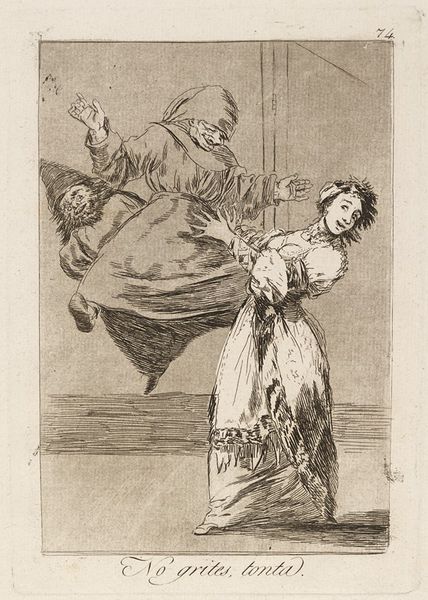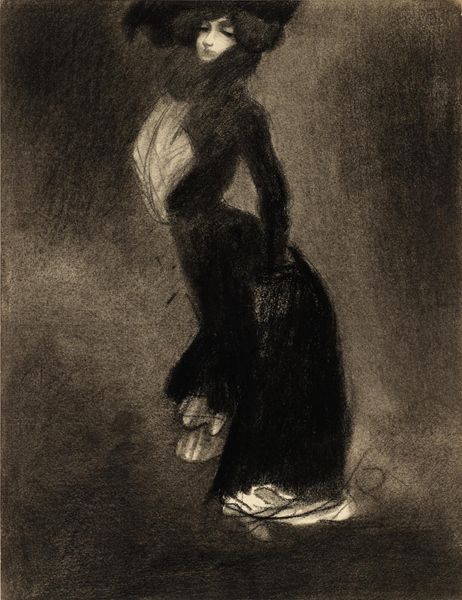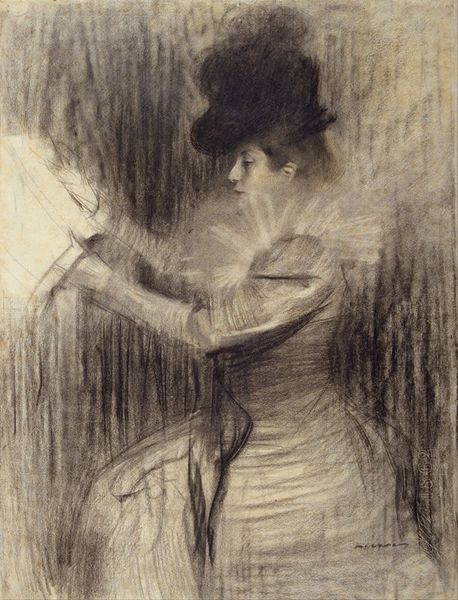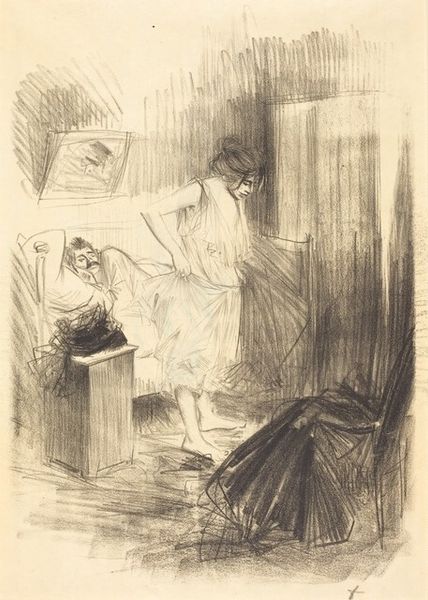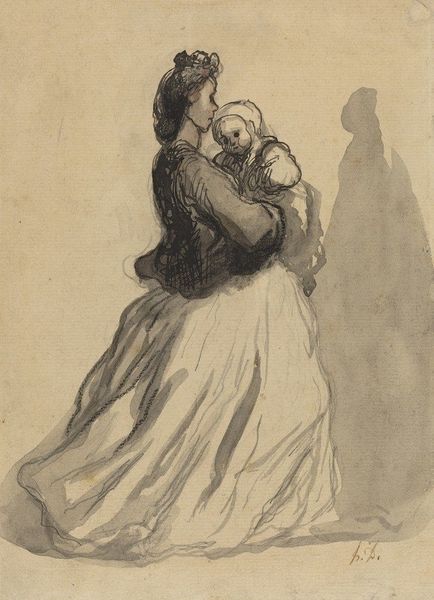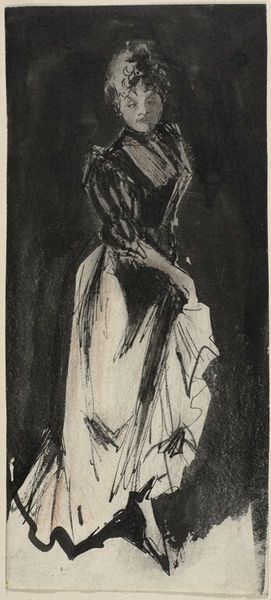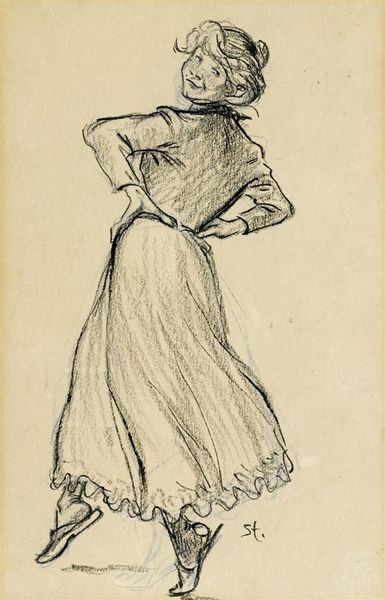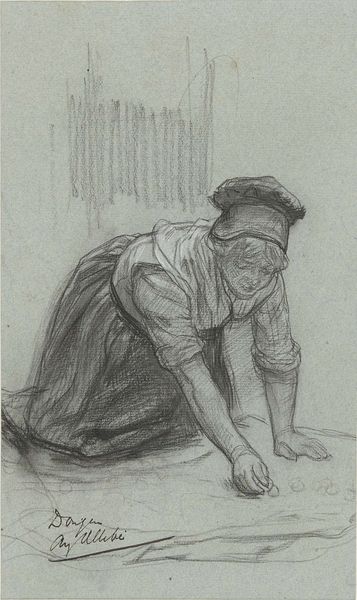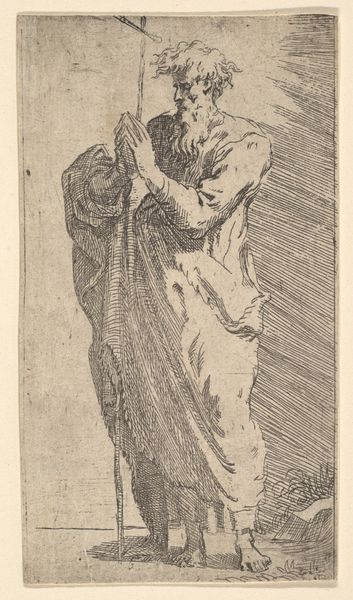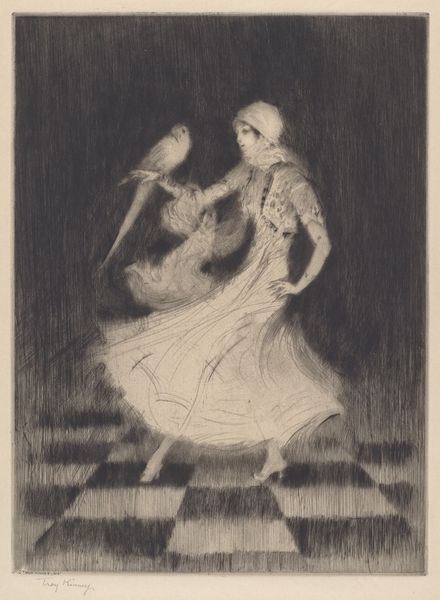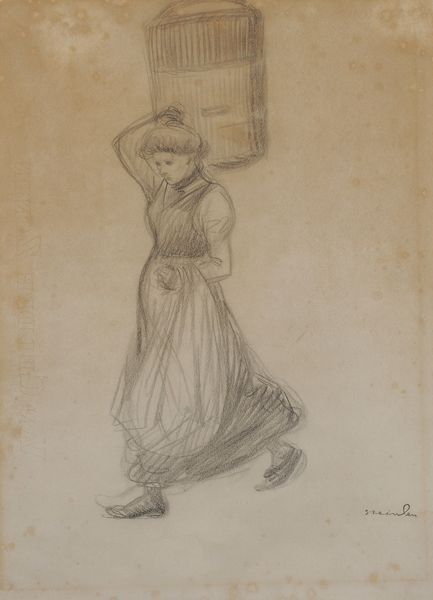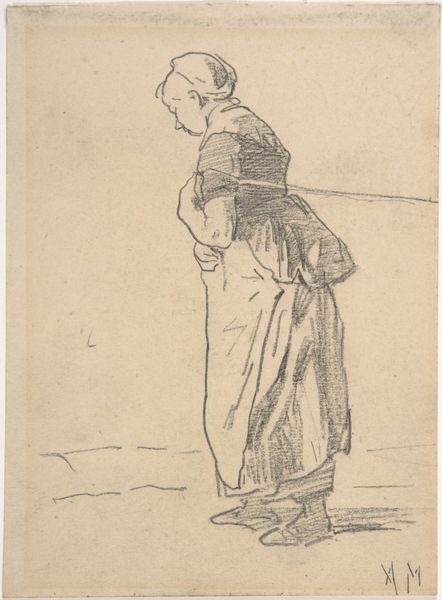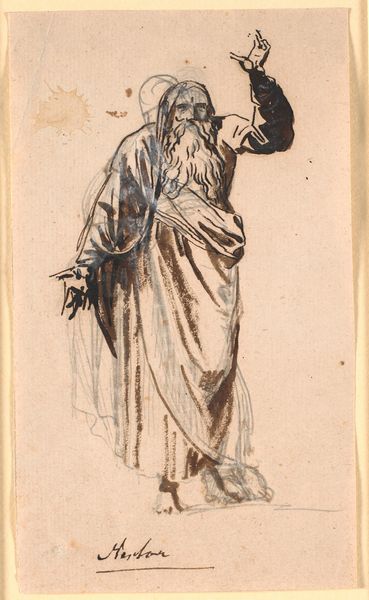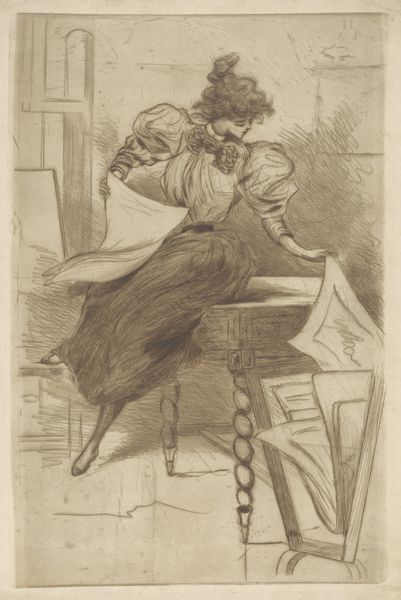
drawing, charcoal, pastel
drawing
charcoal drawing
figuration
coloured pencil
symbolism
genre-painting
charcoal
pastel
realism
Copyright: Public domain
Curator: What a striking image, wouldn’t you say? This piece is titled "Laundress" by Théophile Alexandre Steinlen. It appears to be a drawing, using charcoal and possibly pastel or colored pencil, and it immediately evokes a sense of burdened labor. Editor: It certainly does. My immediate reaction is to the physical weight depicted; you can almost feel the strain in her posture. The monochromatic palette, save for subtle hints of red, really emphasizes the bleakness. Curator: Exactly. Steinlen often depicted the lives of working-class people in Paris. His artistic choices were profoundly shaped by socialist politics and the conditions imposed on these laborers, notably the women. He aims to capture the invisible labor that keeps society afloat. Editor: Right, and the medium reflects that—the sketchiness of the charcoal speaks to a rawness, an immediacy of capturing a fleeting moment of grueling physical work. Laundresses endured long hours in damp conditions, their health often severely impacted by the chemicals and physical demands of the job. Curator: The composition is deliberate too; the heavy basket seems almost as large as the woman herself, obscuring part of her body. It underscores how labor dominates her existence, erasing her individual identity within the chore. This symbolises the systemic exploitation inherent in capitalism, with emphasis on intersectionality within labor classes, with gender adding additional stresses. Editor: Absolutely. Consider how the shadow seems to engulf the lower part of her figure—another visual representation of how her labor subsumes her, making her part of an endless cycle. The simplicity of the materials really emphasizes the material conditions. It's a portrait of production—human production. Curator: Steinlen, in a way, sought to give visibility and agency to people rendered voiceless, using Symbolism as a means to challenge existing power structures by immortalizing this single mother within his body of work. Editor: A perfect summary. The choice of charcoal and the stark representation aren't just artistic choices; they're tied directly to the context of labor and the very real hardships these women faced. It allows us to think more about those people. Curator: A somber reminder of labor inequality, even today. The intersection between class, gender, and labor exploitation remain painfully visible throughout society, prompting ongoing conversations in social justice movements. Editor: Yes, seeing how the simple application of the humble materials represents those realities helps the viewers reflect deeply on the costs of those burdens.
Comments
No comments
Be the first to comment and join the conversation on the ultimate creative platform.
